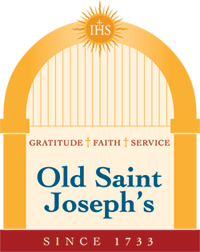for June 26
Friday of the Twelfth Week of Ordinary Time
The first reading today concludes our reflections on the Second Book of Kings with the report of the fall of Jerusalem to the Babylonia Empire in 589 BC. This is one of the darkest moments in the history of the Old Testament Jews. The leaders of Jewish society were carried off to exile in Babylon, near present day Baghdad. Their exile will last for over 40 years until Babylon is overthrown and King Cyrus of Persian permits the Jewish exiles to return to their shattered homeland. Today’s responsorial psalm and tomorrow’s first reading are sorrowful laments expressing the grief of the defeated Jews in exile.
In today’s gospel Matthew picks up his story immediately after the conclusion of the Sermon on the Mount. This is the mountain that is mentioned in the first verse of today’s gospel. Since the sermon has occupied the previous three chapters of the gospel, Matthew, as is his custom switches, from discourse (set speeches of Jesus) to narrative. No more speeches for a while. Now Matthew will report on Jesus’ ministerial activities, especially his healing miracles. And the first miracle in this series is the healing of a leper.
We have all heard innumerable homilies on leprosy in biblical times. The disease was highly contagious, and the approach of a leper provoked understandable fear among the bystanders. Lepers are seldom identified by name, but referred to by the disease they carry, as if the contagion they bear subsumes their entire identity. The ancients could not distinguish a minor infection from a full-blown case of leprosy until the disease had progressed. Hence Jesus tells the leper after he is cured to approach one of the priests to verify he is leprosy-free so that he can return to society.
This scene seems so much more poignant to us, given our experience of a contagious disease over the last three months. We can all relate to the ancient fears and sympathize with the enforced precautions of isolation and quarantine that were imposed on the lepers whose presence was such a threat to public health. This background highlights Jesus’ radical behavior when he reaches out and touches the man afflicted with this dreaded disease.
So what makes this leper think he has a right to break quarantine to approach Jesus? And what made the leper think that simply bringing the request forward could motivate Jesus to respond with a seemingly instantaneous cure? And how did the leper feel when Jesus’ hand touched him, perhaps the first time the leper’s deformed body had been touched by another human being in months, or perhaps years?
Today, of course, leprosy can be readily cured. But as we have seen, there remain so may diseases that are even beyond modern medical science—both physical and psychological maladies. And spiritual illness, too. Perhaps all of us, to some degree, suffer from conditions that threaten our wellbeing or limit our freedom. So in a sense we can all play the role of the leper as we seek out and approach the Lord and call upon his healing power. Lately we have grown in our appreciation for the healing effect of a human touch as an expression of affection. Let us be open to Jesus as he reaches out to touch us.
—Walter Modrys SJ
Today’s readings can be found on the US Conference of Catholic Bishops’ website.
Mass Times
Sunday at 7:30 AM, 9:30AM, 11:30 AM
Tues., Wed., & Thurs. at 12:05 PM
